Table of content
Chinese kale, also known as gai lan or kai lan, is a leafy green vegetable celebrated for its crisp texture, slightly bitter taste, and versatility in the kitchen. Native to Southeast Asia, this vibrant vegetable has become a staple in Chinese cuisine and beyond, prized for its nutritional value and ability to absorb flavors. If you’ve ever wondered how to transform this humble green into a culinary masterpiece, you’re in the right place. This article will guide you through selecting, preparing, and cooking Chinese kale to perfection, ensuring every bite is bursting with flavor and texture. From stir-fries to soups, we’ll explore creative techniques and recipes that will make Chinese kale a star on your plate.
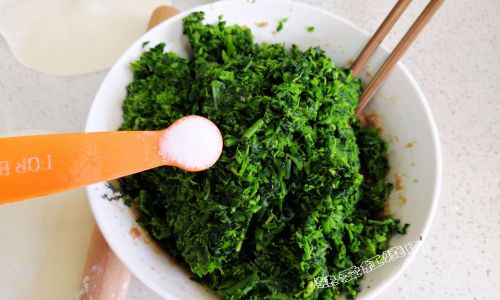
Understanding Chinese Kale: A Brief Introduction
Chinese kale (Brassica oleracea var. alboglabra) belongs to the same family as broccoli, cauliflower, and cabbage. Its thick, juicy stems and glossy, dark green leaves distinguish it from other greens like bok choy or spinach. The flavor profile of Chinese kale is uniquely balanced: the stems offer a mild sweetness, while the leaves provide a subtle bitterness that mellows when cooked. This duality makes it an excellent canvas for bold seasonings, aromatic herbs, and savory sauces.
Nutritionally, Chinese kale is a powerhouse. It’s rich in vitamins A, C, and K, as well as calcium, iron, and fiber. Regular consumption may support bone health, immunity, and digestion. However, its culinary appeal extends far beyond health benefits—it’s a joy to cook and eat.
Selecting the Freshest Chinese Kale
The foundation of a great dish starts with quality ingredients. When shopping for Chinese kale, look for:
- Crisp Stems: The stems should be firm, not wilted or rubbery. Avoid bunches with yellowing or bruised stems.
- Vibrant Leaves: The leaves should be deep green, glossy, and free from blemishes. Avoid leaves that are wilted, yellowing, or have holes (a sign of pests).
- Fresh Aroma: A fresh, earthy scent indicates quality. Avoid bunches with a strong, bitter smell, which may indicate age.
If possible, buy Chinese kale from Asian markets or farmers’ markets, where it’s often sold in larger bunches. Store it in a plastic bag in the refrigerator’s crisper drawer for up to five days. Rinse it under cold water just before cooking to remove dirt.
Preparation Techniques: Cleaning and Cutting
Proper preparation ensures even cooking and maximizes flavor. Follow these steps:
- Trim the Ends: Use a sharp knife to slice off the tough bottom inch of the stems.
- Separate Stems and Leaves: The stems take longer to cook than the leaves. For stir-fries, slice the stems diagonally into ½-inch pieces and roughly chop the leaves.
- Peel Thick Stems (Optional): If the stems are exceptionally thick, use a vegetable peeler to remove the fibrous outer layer. This step is optional but ensures a tender texture.
- Blanching (for Soups or Salads): To soften the stems slightly, blanch them in boiling water for 1–2 minutes before adding to dishes.
Cooking Methods: From Stir-Fries to Roasts
Chinese kale’s adaptability shines in various cooking methods. Here’s how to master each technique:
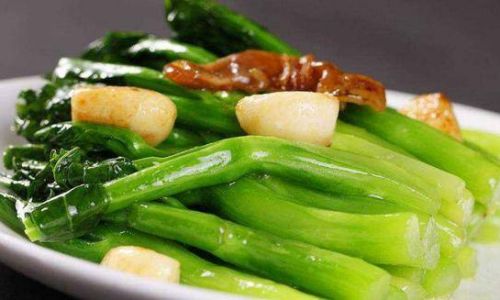
Stir-Frying: The Classic Approach
Stir-frying is the most popular way to cook Chinese kale, as it preserves crunch and color.
- Ingredients:
- 1 bunch Chinese kale (stems and leaves separated)
- 2 tbsp cooking oil (peanut or vegetable)
- 3 garlic cloves, minced
- 1 tsp fresh ginger, grated
- 1 tbsp oyster sauce (or vegetarian oyster sauce)
- 1 tbsp soy sauce
- ½ tsp sugar
- 1 tbsp water or stock
- Instructions:
- Heat oil in a wok over high heat until smoking.
- Add garlic and ginger; stir-fry for 30 seconds until fragrant.
- Toss in the stems and stir-fry for 2 minutes.
- Add the leaves and stir-fry until wilted (1–2 minutes).
- Stir in oyster sauce, soy sauce, sugar, and water. Toss to coat.
- Serve immediately with steamed rice.
Pro Tip: For extra flavor, add a splash of sesame oil or a sprinkle of toasted sesame seeds before serving.
Blanching and Sautéing: A Delicate Touch
Blanching softens the stems while retaining the leaves’ vibrancy.
- Ingredients:
- 1 bunch Chinese kale
- 1 tbsp salt
- 2 tbsp olive oil
- 1 shallot, thinly sliced
- 1 red chili, deseeded and sliced
- 1 tbsp rice vinegar
- Instructions:
- Bring a pot of salted water to a boil. Blanch the kale stems for 2 minutes, then add the leaves for 30 seconds.
- Drain and shock in ice water to halt cooking. Pat dry.
- Heat olive oil in a pan. Sauté shallot and chili until soft.
- Add blanched kale and sauté for 2 minutes. Drizzle with rice vinegar.
Steaming: A Healthier Option
Steaming preserves nutrients and yields tender-crisp results.
- Ingredients:
- 1 bunch Chinese kale
- 1 tbsp sesame oil
- 2 tbsp light soy sauce
- 1 tsp honey
- 1 garlic clove, grated
- Instructions:
- Place kale in a steamer basket over boiling water. Steam for 3–4 minutes.
- Whisk sesame oil, soy sauce, honey, and garlic. Toss with steamed kale.
Roasting: Caramelized Goodness
Roasting intensifies the natural sweetness of Chinese kale.
- Ingredients:
- 1 bunch Chinese kale, cut into 2-inch pieces
- 2 tbsp olive oil
- 1 tsp smoked paprika
- 1 tsp garlic powder
- Salt and pepper to taste
- Instructions:
- Preheat oven to 425°F (220°C). Toss kale with oil and spices.
- Spread on a baking sheet. Roast for 12–15 minutes until crispy.
Creative Recipe Ideas
Chinese Kale with Fermented Black Beans
A pungent, umami-rich dish that pairs well with grilled meats.
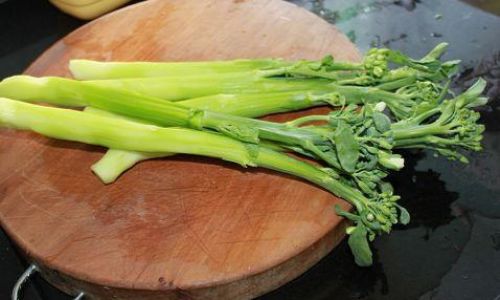
- Ingredients:
- 1 bunch Chinese kale
- 1 tbsp fermented black beans, rinsed
- 1 tbsp Shaoxing wine
- 1 tbsp cornstarch (mixed with 2 tbsp water)
- Instructions:
- Stir-fry garlic and black beans in oil. Add kale stems and leaves.
- Deglaze with Shaoxing wine. Stir in cornstarch slurry until thickened.
Chinese Kale and Tofu Stir-Fry
A vegetarian delight with protein-rich tofu.
- Ingredients:
- 1 block firm tofu, cubed
- 1 bunch Chinese kale
- 2 tbsp hoisin sauce
- 1 tbsp chili paste
- Instructions:
- Pan-fry tofu until golden. Set aside.
- Stir-fry kale with garlic. Add tofu, hoisin sauce, and chili paste. Toss to combine.
Chinese Kale and Mushroom Soup
A comforting broth for cold nights.
- Ingredients:
- 1 bunch Chinese kale, chopped
- 1 cup shiitake mushrooms, sliced
- 4 cups vegetable stock
- 1 tbsp miso paste
- Instructions:
- Simmer mushrooms in stock for 10 minutes. Add kale and miso.
- Cook until kale wilts. Serve hot.
Health Benefits: More Than Just a Side Dish
Chinese kale’s nutritional profile makes it a worthy addition to any diet:
- Antioxidants: Rich in vitamins C and E, which combat oxidative stress.
- Bone Health: High in calcium and vitamin K, essential for bone density.
- Digestive Health: Fiber aids digestion and promotes gut health.
- Anti-Inflammatory: Compounds like sulforaphane may reduce inflammation.
Tips for Perfect Chinese Kale Dishes
- Don’t Overcook: Overcooking turns leaves mushy and stems soggy. Aim for tender-crisp texture.
- Balance Flavors: Pair with salty (soy sauce), sweet (honey), and spicy (chili) elements.
- Use High Heat: Stir-frying requires high heat to sear vegetables quickly.
- Experiment with Textures: Combine roasted, blanched, and raw kale in salads for contrast.
- Add Acidity: A squeeze of lemon or rice vinegar brightens the dish.
Conclusion: Elevate Your Cooking with Chinese Kale
Chinese kale is more than a side dish—it’s a versatile ingredient that can elevate any meal. Whether stir-fried, roasted, or steamed, its unique flavor and texture shine when paired with complementary ingredients. By mastering these techniques and recipes, you’ll not only impress your dinner guests but also nourish your body with a nutrient-packed green. So next time you spot a bunch of Chinese kale at the market, grab it with confidence—your taste buds (and health) will thank you.
Final Tip: For a quick weeknight meal, toss Chinese kale with leftover proteins, a drizzle of soy sauce, and a sprinkle of sesame seeds. It’s simple, satisfying, and ready in minutes. Happy cooking!

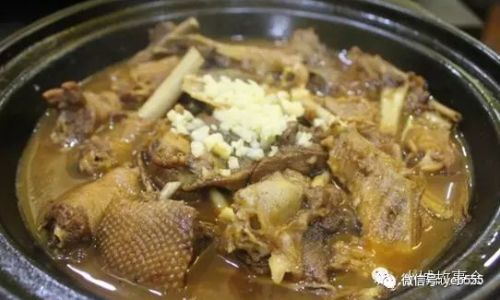

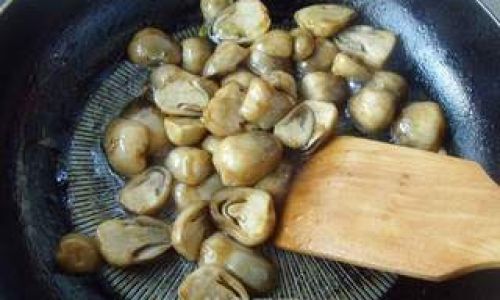


0 comments